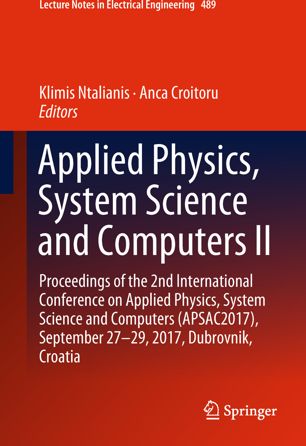

Most ebook files are in PDF format, so you can easily read them using various software such as Foxit Reader or directly on the Google Chrome browser.
Some ebook files are released by publishers in other formats such as .awz, .mobi, .epub, .fb2, etc. You may need to install specific software to read these formats on mobile/PC, such as Calibre.
Please read the tutorial at this link: https://ebookbell.com/faq
We offer FREE conversion to the popular formats you request; however, this may take some time. Therefore, right after payment, please email us, and we will try to provide the service as quickly as possible.
For some exceptional file formats or broken links (if any), please refrain from opening any disputes. Instead, email us first, and we will try to assist within a maximum of 6 hours.
EbookBell Team

4.1
90 reviewsThis book reports on advanced theories and methods in three related fields of research: applied physics, system science and computers. It is organized in three parts, the first of which covers applied physics topics, including lasers and accelerators; condensed matter, soft matter and materials science; nanoscience and quantum engineering; atomic, molecular, optical and plasma physics; as well as nuclear and high-energy particle physics. It also addresses astrophysics, gravitation, earth and environmental science, as well as medical and biological physics. The second and third parts focus on advances in computers and system science, respectively, and report on automatic circuit control, power systems, computer communication, fluid mechanics, simulation and modeling, software engineering, data structures and applications of artificial intelligence among other areas. Offering a collection of contributions presented at the 2nd International Conference on Applied Physics, System Science and Computers (APSAC), held in Dubrovnik, Croatia on September 27–29, 2017, the book bridges the gap between applied physics and electrical engineering. It not only to presents new methods, but also promotes collaborations between different communities working on related topics at the interface between physics and engineering, with a special focus on communication, data modeling and visualization, quantum information, applied mechanics as well as bio and geophysics.